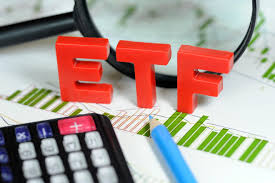
ETFs are very popular among investors
Constitute Close to 13% of the Total Mutual Fund Industry AUM
A study by Zerodha Fund House reveals that ETFs now constitute close to 13% of the total Mutual Fund Industry AUM indicating the remarkable adoption of ETFs by retail investors in India. The substantial share of Rs.6.95 lakh crore out of the total Rs.53.40 lakh crore signifies a shift towards more investors choosing ETFs as a preferred mode of investment.
The rise from 5.33 lakh accounts (across equity and debt EFTs) in 2017 to 1.25 crore in 2023 reflects a broader acceptance and understanding of ETFs among retail investors. The increase in the number of ETF accounts, particularly among retail investors, suggests a democratization of investment opportunities. This trend could be attributed to the benefits of ETFs, such as lower costs, diversification, and ease of trading.
The trading volume of ETFs has shown consistent growth, indicating enhanced liquidity and investor participation in the ETF market. The trading volume has surged from Rs.26,139 crore in FY 2016-17 to Rs.1,83,676 crore in FY 2023-24. This increase of over 600% reflects growing investor confidence and the maturation of the ETF market in India. In the last one year, the trading volume of ETFs has seen a significant growth of approx. 64,000 crores.
The study reveals that the ETFs on top three broad indices i.e., Nifty 50 ETF, Nifty Next 50 ETF and Nifty Midcap 150 ETF alone contribute more than 99% of total AUM among broad indices in the Equity ETF schemes. Nifty 50 ETFs emerge as the leading contributor among the broad based indices with 95% of the total AUM in Equity ETF schemes, as of 31st March 2024. Nifty 50 ETFs have INR 2,77,471 crores in AUM followed by INR 9,628 crores in Nifty Next 50 and INR 2,284 crores in Nifty Midcap 150.
The distribution of AUM across various indices shows a diversification trend among equity ETF investors.
Speaking on ETFs, Vishal Jain, CEO Zerodha Fund House said, “The ETF market in India is poised for continued growth. As more investors recognize the advantages of ETFs, the segment is likely to see increased inflows and diversification. The trend in passive investing is expected to persist, driven by retail investors in the coming years, as passive products are easy to understand, transparent & affordable”.
Overall, Equity ETF schemes consist of eight broad based indices and 40 schemes as on date. The includes 18 schemes under Nifty 50 ETF, 7 in Nifty Next 50 ETF, 5 in Nifty Midcap 150 ETF, 4 in Nifty 100 ETF, 2 each in Nifty Midcap 100 ETF & Nifty Smallcap 250 ETF, and 1 each in Nifty MidCap 50 ETF and Nifty 500 ETF.
Equity, debt and gold ETFs
Equity ETFs:
# The AUM for Equity ETFs has consistently increased, going from Rs.43,234 crores in March 2017 to Rs.5,63,176 crores in March 2024.
# This category has shown the most substantial growth, highlighting a strong investor preference for equity-based ETFs.
Debt ETFs:
# Debt ETFs have also seen significant growth, from Rs.1,497 crores in March 2017 to Rs.96,163 crores in March 2024.
# The growth in Debt ETFs has accelerated particularly from March 2019 onwards, indicating an increasing shift towards fixed-income securities in recent years.
Gold ETFs:
# Gold ETFs have grown steadily, from Rs.5,480 crores in March 2017 to Rs.31,224 crores in March 2024.
# Between 2017 and 2024, AUM in Gold ETFs has increased by 470%, which is less pronounced compared to growth in Equity (1200%+) and Debt (6300%+) ETFs.
>> Post your MF questions @ sahifund.com/ask-me/
>> NFO Guidance:
https://sahifund.com/category/nfos/
Quicklinks
- Chanakyanipothi.com
- Staffavailable.com
- BigGaddi.com
- Latest IPO GMP
- Best Stocks to buy today
- Grey Market Premium
- Upcoming IPOs
- Subscription Status



 June 24, 2024
June 24, 2024 admin
admin



